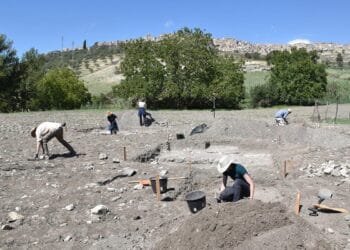Inductively Coupled Plasma-Atomic Emission Spectrometry (ICP-AES) is a powerful analytical technique used in archaeology for the analysis of archaeological samples. It provides valuable information about the elemental composition of various materials, including ceramics, metals, glass, and sediments.
Some of the primary applications of ICP-AES in archaeology:
Sourcing and Provenance Studies: ICP-AES is used to determine the elemental composition of artifacts and compare them with known geological sources. By analyzing the trace elements present in ceramics, metals, or other materials, archaeologists can identify the geographical origin of the artifacts and establish trade routes and networks.
Chronology and Dating: ICP-AES assists in establishing chronologies by analyzing the elemental composition of different layers within stratigraphic sequences. The technique helps determine the age and sequence of deposition of archaeological samples.
Technology and Craft Production: ICP-AES allows researchers to study ancient manufacturing techniques by analyzing the elemental composition of artifacts. For example, the analysis of metal artifacts can reveal information about metalworking technologies, alloy compositions, and trade patterns.
Environmental Studies: ICP-AES is used to examine the chemical composition of sediments, soils, and plant remains. It helps in understanding past environmental conditions, such as pollution levels, land use patterns, and changes in vegetation over time.
Conservation and Restoration: ICP-AES plays a crucial role in the preservation and restoration of archaeological objects. By analyzing the elemental composition of materials, conservation scientists can identify corrosion products, assess the stability of materials, and determine appropriate conservation treatments.
Archaeometallurgy: ICP-AES is extensively used in the study of ancient metal artifacts and metallurgical processes. It provides insights into metal composition, impurities, and the technology employed by ancient metalworkers.
By employing ICP-AES, archaeologists can obtain precise and quantitative data on the elemental composition of archaeological materials. This information helps them reconstruct ancient technologies, trade networks, human-environment interactions, and cultural practices, contributing to a deeper understanding of past civilizations.

























